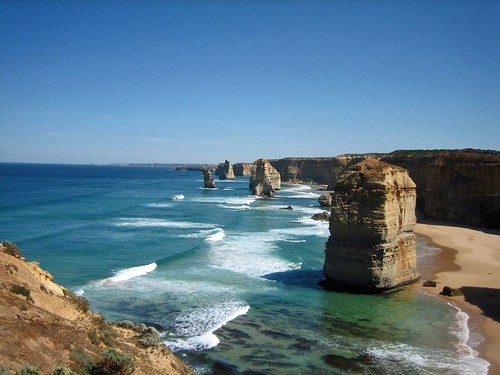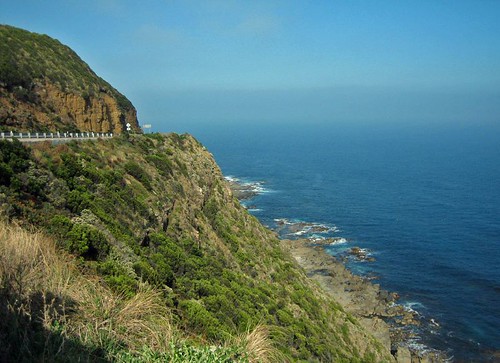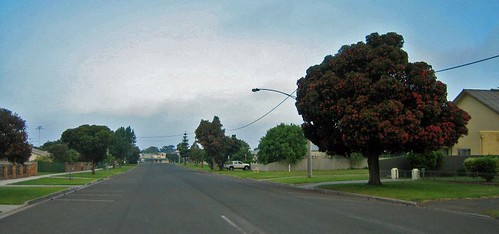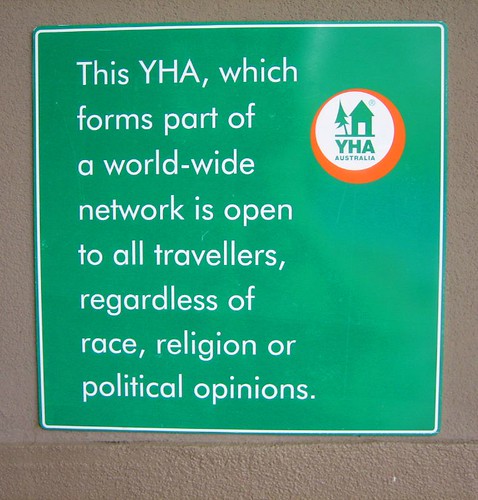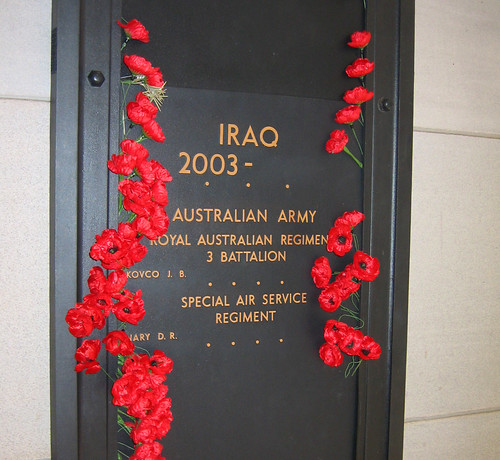The Sydney Opera House is the icon for the city, but turn around and you will see another landmark, the
Sydney Harbour Bridge. Opened in 1932, the bridge connects downtown Sydney (the CBD) with North Sydney. Daily traffic includes about 180,000 cars as well as trains, bicycles and pedestraians. The steel structure once earned the nickname "The Coathanger," but I haven't heard anyone use this nickname.
The bridge is also unique because of a company called
BridgeClimb that shepherds packs of adventure seekers on a 3 1/2-hour tour from the street to the top of the structure, 134 meters above Sydney Harbour (420 feet or the height of a 40-story building). Australians, tourists, celebrities, adults, familes, they all climb the bridge. What could have turned out to be a dismal experience was the highlight of my trip so far.
The BridgeClimb starts at street level, where climbers sign a release form, are given a breathalyzer test and are introduced to their climb leader. My group of 12 include three English girls on holiday, a French mother and daughter who looked exactly alike, an Australian-Bralizilian couple spending their last days in Sydney before relocating to Brazil, and a mother and her teenage daughter from Tasmania. And me, the lone American.
Once we'd been briefed, we were told to empty pockets and remove nonessential items - watches, jewelry, hats, tissues, anything and everything - and then given snazzy grey and blue jumpsuits and directed to changing rooms. I assume that in order allow the general public to climb to the top of a public structure, the insurance company has instituted strict rules and guidelines. So I looked like an Oompa-Loompa for a few hours. Big deal.
Once we were outfitted with jumpsuits, we were given harnesses, hats, bandannas, a strap to hold glasses/sunglasses, radio transmitters and headsets. Everything clipped to the jumpsuit so nothing would plummet onto the roadway below. We were also given a conntraption that clipped onto the harness that would attach us to a line on the bridge. Noone would plummet onto the roadway either.
There are two sets of ladders that we would be climbing and there was a short practice session. Basically, one at a time, watch your neighbor and be careful.
After a quick group cheer, we were paraded onto the street for the approach to the bridge. Imagine a dozen dorks in matching suits walking through downtown Sydney and you get the picture. This is not an activity for the vain or excessively shy. We reached the start of the climb, clipped in and were ready to go. There was a sense of nervous excitement in the group, with everyone looking forward to the climb but not really knowing what to expect.
The
route starts with a level walk across a catwalk on the approach to the south pylon, a massive structure of white granite. This first catwalk is about two feet wide and see-through, so as we moved toward the water the street and the roof of the Sydney Hyatt were visible about a hundred feet below (there's a nice little pool on the roof of the Hyatt - who knew?). Already there were views of The Rocks, Circular Quay and the Opera House to the west. After passing the southern pylon, we started to ascend the eastern arch by by a set of short steps. At this point you are still beneath the roadway and feel a bit encased, often ducking to avoid banging your head on a beam. You are walking on catwalks, wooden planks and steel steps - always attached to the bridge and never in danger. This is the guts of the bridge, all laid out in front of you. Anyone interested in how bridges are constructed would be well served by this tour.
Once you reach the ladders and climb past the roadway, you leave the guts behind and the sense of exposure grows. The header at the top of this blog now shows the bridge. The route takes you on top of the structure on the easern side (closest to the camera). There is a long series of steps as you continues to the top, to where the flags are, and then you cross to the western side for the descent. Along the way, there's little chatter from the guide other than a few safety reminders. There are a few stops for individual photos (available to purchase in the gift shop later, of course), but for the most part everyone is left to gawk at the view and experience the climb for themselves.
I was worried that the climb would be rushed, but there were often times when we just stopped to enjoy the view. As individual pictures were being taken, on the approach to the top, at the top itself and while descending eh western arch, the group was left to its own devices. There were a few times when I was relatively by myself at the top of the bridge. The 360-degree views stretched from the Pacific Ocean to the east, north over North Sydney, to the inner harbour to the west and south over the Central Business District.
I chose a 5:30 pm climb, which meant we started when the sun was shining, but as we got higher and higher, the lights of the city started to turn on, the sun started to set in the west and the temperature dropped. Good move on my part. For an extra $80 there is a twilight climb, which I would do if I were to return to Sydney someday, just to be on the bridge at night.
The BridgeClimb could have been lame. Instead, great care has been taken to making climbers feel safe, giving them time to enjoy the climb and making the experience something to really remember. Paul Cave, the founder of BridgeClimb, worked for 11 years to make this a reality, battling city and state organizations to make it happen. His persistance has paid off. CLose to 2 million people have climbed the Sydney Harbour Bridge. I'm just one of them, and I'm not being paid by anyone involved with the organization. But I can wholeheartedly recommend BridgeClimb - you will never forget the experience.
I think the look on my face says it all.

My group at the top of the bridge:

Labels: Adventure, Australia, Sydney




